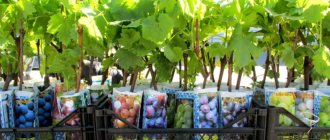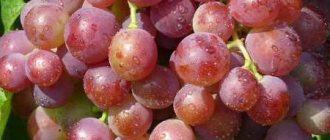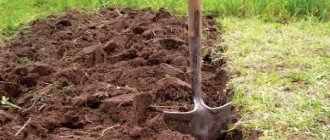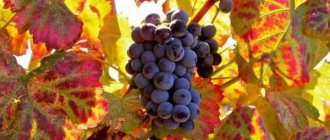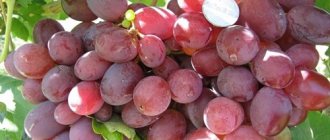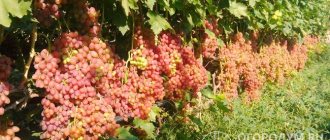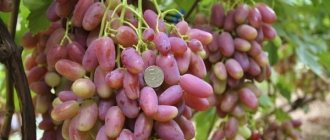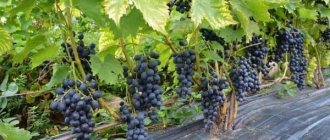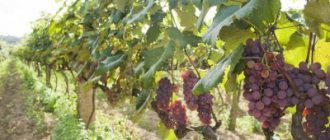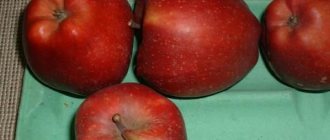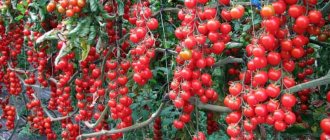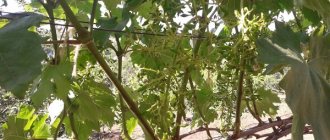Since ancient times, grapes have been considered one of the best indicators of fertility and wealth. To this day it is very difficult to find a person who will be absolutely indifferent to these ripe and juicy berries. Grapes can not only be eaten fresh, but also made into amazing jam. And also make wine. Since today there is an incredibly large number of bred varieties, each of which has distinctive characteristics, in this article we will separately consider the description of the “souvenir” grapes. We’ll talk in detail about planting and growing grapes and study current information based on reviews from the most experienced gardeners.
Grapes “souvenir”: description of the variety
This variety is also called “satellite”, “black souvenir”. They are also called “Odessa souvenir” grapes. The description of the bush is quite simple - it is a medium-sized, powerful plant with reddish-brown shoots. Young shoots are light green in color. The three-lobed leaves are medium in size and lightly pubescent, similar to bristles. Flowers of this variety are of both sexes. The bunches of “souvenir” grapes have a conical shape, are quite loose, and reach a weight of three hundred to five hundred grams. The variety is characterized by large berries, egg-shaped and elongated, which at the beginning of ripening are dark red in color, and by the time of harvest they become dark blue, acquiring a white coating. A very dense and fairly thick skin hides a juicy and fleshy pulp, with incredibly tasty nutmeg and thorny shades. Each berry contains two or three seeds, which become almost invisible by the time they are fully ripe.
"souvenir de congre" in books
Souvenir
Souvenir Souvenir. Zhakman Group.M. I. Orlov. 1969 Flowers open, up to 12 cm in diameter. Chshl. usually 6, they overlap each other, purple-blue, almost do not fade. Anthers grey-purple. Shrub vine up to 2.5 m long. Young shoots and leaf petioles
Souvenir
Souvenir Souvenir. Zhakman Group.M. I. Orlov. 1969 Flowers open, up to 12 cm in diameter. Chshl. usually 6, they overlap each other, purple-blue, almost do not fade. Anthers grey-purple. Shrub vine up to 2.5 m long. Young shoots and leaf petioles
SOUVENIR
SOUVENIR I remembered how I helped one of our chroniclers make a purchase during a tourist trip to Japan. For some reason, the Chronicler decided that I knew English, and asked me to help buy him condoms with antennae. “Well, I don’t know how to say condom in English,”
Russian souvenir
Russian souvenir The winter that year turned out to be cold and blizzard. The sun didn't show for weeks. The leaden sky was pouring and pouring snow, the stormy wind laid it in bizarre drifts - dense, like white asphalt. Throughout December, our regiment did not so much fly as
Lightly salted cucumbers with honey, garlic, dill, red pepper, mustard and vodka “Real Russian Souvenir”
Cocktail “Russian souvenir”
Souvenir "Apple"
Souvenir “Apple” Such a funny apple will decorate any room in your apartment and will definitely delight all guests. You will need Newspapers, a round vase, cardboard, colored paper, acrylic paints, colorless varnish, PVA glue, knitting needles, brushes, scissors. Procedure: 1. From the newspaper
New Year's souvenir "Snowman"
New Year's souvenir “Snowman” Such a snowman will look great under the New Year tree and lift the spirits of everyone in the household. You will need Newspapers, colored paper, acrylic paints, colorless varnish, PVA glue, knitting needles, brushes, scissors. Work progress: 1. From the newspaper
Souvenir
Souvenir The variety was obtained by A. G. Usov in Crimea by crossing the Wagner and Crimean Zolotoe varieties. It is in state and industrial testing. In the conditions of the southern zone of Russia, it is quite winter-hardy, the shape of the crown is round. Not affected by scab and mealy
Altai souvenir
Souvenir of Altai The variety was obtained by crossing the Gornoaltaiskoe variety with a hybrid of Pepin Saffron and Bellefleur-Kitaika. Grown in the Altai region. Winter hardiness is average, the crown shape is round. It bears fruit in the 5-6th year of growth, the yield is annual. Mildly affected
Ural souvenir
Ural souvenir The variety was bred by L. A. Kotov, P. A. Dibrov at the Sverdlovsk Experimental Horticulture Station by crossing the varieties Udarnitsa and Uralskoe Bolshoye. It is in production in the Volga-Vyatka region. The variety is winter-hardy, the crown is wide-pyramidal. It bears fruit on the 3rd-4th
Souvenir
KUTAB "SOUVENIR"
KUTAB “SOUVENIR” Prepare unleavened dough from flour, eggs and water. Divide it into parts. Roll each piece into a thin layer with a diameter of 10–15 cm. For the filling, fry stewed cabbage, carrots, and onions in lard with cracklings. Place the slightly cooled filling on
Israel Shamir ISRAELI SOUVENIR
Israel Shamir ISRAELI SOUVENIR “When I found myself in the West, I was struck by the strict distinction between Jews and non-Jews,” wrote Joseph Brodsky. These words of the poet were cited by Vladimir Bondarenko in his wonderful article about the poet, published in Literary
Article on the topic: The structure and life of a grape bush - grapes
Souvenir from Red Square
Souvenir from Red Square One day, a young Italian, David Gaspari, came to Russia for the first time. It was a frosty November 1996. David, who had just received a high position, arrived at the invitation of the management of a young Russian company that had bought the previous summer
History of grape variety development
The production of this variety became possible thanks to the painstaking work of Ukrainian breeders. The crossing of the “Hamburg nutmeg” of the Moldavian black hybrid took place within the walls of the Tairov Research Institute of Vitality. Already from Ukraine, the “souvenir” grape variety began to gradually spread throughout the Black Sea region and other regions with a pleasant, warm climate. The creators of the variety themselves claim that the best place for planting this wonderful grape is the initially planned territory of Odessa and Kherson.
Selection and main characteristics of the variety
Heat-loving noble Odessa varieties appeared as a result of crossing Black Moldavian and Hamburg grapes. Low, spreading bushes are common near the sea, where there is a lot of sun and little coolness. These table species love a mild climate with little rainfall. The favorite of Odessa has a hard time withstanding frosts and periods of heavy rain. If bad weather fails to interfere, bushes and pagons are covered with a tarpaulin. High humidity can harm not so much the berries as the root system of the grapes.
Table varieties of this type can be planted on any soil, even clay.
The shoots and vines will still take root. Dangerous for berries is the invasion of birds and various insects. To prevent damage to the crop, the bushes are covered with nets and carefully fenced. Special bags that are placed on the ripening bunches will help keep the bees away. The owner of the site should take care that there are no wasp nests nearby that will become a cause for concern. Special traps and baits help against other types of insects. All the effort spent on protecting the harvest will be repaid by its quality and incredible taste of each berry.
In the southern regions there are many varieties of table grapes, each of which has its own unique taste. The souvenir received from Moldavian and Hamburg stands out against their background. The sweet taste of the berries, rich aroma and large clusters allow you to harvest a large harvest with minimal cost. When choosing grape varieties, you should decide on its taste and appearance, which will be admired by all household members.
Yield characteristics
The undoubted advantage of this variety is its high yield, the ability to easily tolerate transportation and fairly long-term storage. And, of course, the most important indicator for grapes is the assessment of taste. The “souvenir” variety has a fairly high score - 8.64 points on a ten-point scale. Sugar content is within fifteen grams per milliliter, acidity is from seven and a half to eight percent. The berries provide more than seventy percent of the juice of the total mass. Such characteristics are most important for winemakers and grape juice producers.
Reviews from gardeners
Alexander: “There are no complaints about the taste and quality of the fruit, but I have never seen a better berry for compotes! But the variety absolutely does not tolerate overload. This leads to the development of small berries and clusters.”
Victor: “I’ve had this variety on my plot for a long time, it always ripens back to back. The clusters are beautiful, the berries are aromatic, tasty, with a nutmeg aftertaste. But, grapes are greatly influenced by free space. My yield is lower than my neighbor’s, on a larger plot.”
Anna: “The fruits of the Odessa souvenir have an attractive appearance, their shape is elongated, their color is deep blue, and their taste is harmonious. The only drawback for me is the huge number of dense seeds in the berry, which make it difficult to enjoy the grapes.”
Andrey: “The variety is good, it is resistant to diseases and pests, the fruits are aromatic, with a light nutmeg aftertaste. The bush does not tolerate overload at all and requires timely rationing, so I leave only 1 bunch per shoot. Sputnik is demanding in terms of care, so it is not suitable for a beginner.”
Odessa Souvenir is a universal southern variety, characterized by high yields and improved production characteristics. Its fruits are suitable for fresh consumption and food processing. The variety is demanding in terms of maintenance conditions, so it will take a lot of effort to provide them. The grapes are heat-loving, so they will grow only in mild climates with warm and short winters.
Reviews of grapes “souvenir”
There are a lot of them. Judging by the most reliable reviews about the “souvenir” grape variety, a number of advantages can be identified:
- high yield - more than one hundred and twenty centners per hectare;
- stable acidity and sugar content;
- the highest taste and aroma qualities;
- high-quality mechanical composition (percentage ratio of juice and unused parts of the berry);
- long-term storage (about three months) and transportation;
- resistance to many diseases (for example, gray mold and grape leaf roller).
Undoubtedly, this variety also has its drawbacks, namely the long period of full ripening (at least one hundred and forty-two days) and complete intolerance to low temperatures (below minus twenty degrees Celsius).
Cultivation
Selecting a location
The plant needs sunlight
The grape bush is planted in an open, illuminated area. It is better to choose the south side, where there is no shadow or drafts. The bushes grow quickly, so a spacious plot of land is prepared for the rhizome.
Planting in open ground
According to the description of the Souvenir grape variety, the depth of the dug hole should be at least 80 cm, which will allow the vine to quickly grow and develop. A young treated seedling is immersed, soaked in water for 5-6 hours, up to the level of the root collar. Before planting, the cuttings are inspected for signs of damage or rot.
After planting, the seedling is watered abundantly - at least 10 liters of water are poured in. A support is installed for the young vine, which will ensure proper growth of the grapes. The bushes are planted at a distance of 1 m from each other. Additionally, the vines are pruned, which prevents young shoots from rotting. The variety quickly takes root during the first weeks and does not require additional soil fertilization.
Planting grapes "souvenir"
For planting, you need to choose the sunniest place. It is best to prefer hilly areas on the south side. Thanks to its location on a hill, the bush will always be supplied with fresh air. Since the bush has a powerful root system, dig a hole for the seedling with a depth and diameter of at least eighty centimeters. It is advisable to pour a layer of maximally fertile soil and compost at the bottom. Only after this should the seedling be covered with ordinary soil. The next step when planting is abundant watering - at least fifteen liters of water for each seedling.
Tips for growing and caring for grapes
The first year of growing grapes is the most troublesome. Mandatory loosening of the soil with complete removal of weeds is required. Proper and regular watering is important. The first watering should be done a couple of weeks after planting. After the first winter, abundant growth and opening of the bush begins. At this moment it is necessary to trim and tie up the bush. When pruning young fruitful shoots, leave at least six to seven eyes on each. It is best to tie a garter using fabric or soft rope, but not fishing line or nylon thread. Fertilizing the soil and feeding the bush for the first time is done just after gartering. In the future, it is necessary to follow the schedule for feeding the bush with mineral and organic fertilizers. Literally from the second year of cultivation, caring for the bush is greatly simplified and comes down to autumn pruning of weak and damaged branches.
Diseases, pests and methods of combating them
The main pests that continually try to spoil the crop are wasps and birds.
The only way to protect grapes from birds is to install a net, which will be an obstacle if you want to get onto the grape bush. To save grapes from the harm caused by wasps, it is necessary to destroy absolutely all nests located nearby. You can also use baits that should not have an excessive aroma, since in this case, the wasps will quickly understand the substitution. As for the diseases that affect the grape bush, it is worth highlighting three main ones. The oidium virus is quite difficult to detect with the naked eye. And the most unpleasant thing is that it can withstand even extreme cold. It is very important to remove infected branches as quickly as possible, and spray healthy ones with specialized chemicals. The best time for this procedure is early morning or late evening.
Another scourge that affects many types of plants, including grapes, is powdery mildew. Sulfur-containing drugs such as “Karatan” or “Rubigan” can save you from it. It is best to spray with sulfur in the early morning, since if the heat is too strong, you can simply burn the bush.
Finally, the most terrible disease is bacterial cancer. Your task is to prevent the disease. To do this, it is important to provide the bush with ventilation and monitor the condition of the shoots as a whole. Avoid minor damage and scratches. Since it is useless to fight this disease, the infected bush should be destroyed.
Advantages of the variety
A significant number of characteristics of the Podarok Nesvetaya grape are currently being studied. However, based on the stated data and observations of winegrowers, the following advantages of the hybrid variety can be identified:
- bisexual flowering, which does not require post-pollination manipulations;
- good ripening of the vines;
- very early harvest;
- presentation of the harvested crop at a high level;
- external attractiveness of a bunch of grapes;
- good taste of the berries;
- frost resistance at -24° C;
- resistance to fungal diseases 2.5 points;
